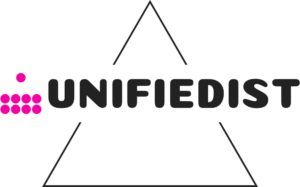The Power of cold email personalization
Share
Are you looking for an effective way to personalize your cold email outreach and stand out from your competitors? Cold email personalization is a super effective way to generate qualified leads for your organization.
To personalize your email outreach effectively, your sales team reps should know the target customer profile inside and out. So researching the prospect, identifying the pain points, and creating subject email lines that get attention can value prospects that resonate.
This article will explore creating cold email personalization that resonates with your target audience, the critical strategies of successful cold emails with perfect examples, and how to measure their performance. So let’s dive in!
What is Cold Email Personalization?
Personalization is adding or putting a text unique for the different prospects. Not by simply using basic attributes like {{prospect. first_name}} and {{company.name}} is not the way of personalization.
Crafting an email copy tailored to your target prospect personalizes your cold email outreach. With personalized email outreach, you must convince the prospect that you have dug a lot to grab their attention. It’s about designed writing to give a personal touch to the prospect to make them remember by researching about them thoroughly.
Now you got the idea, right? The only thing you need to focus on is personalizing every email you send should be different per prospect.
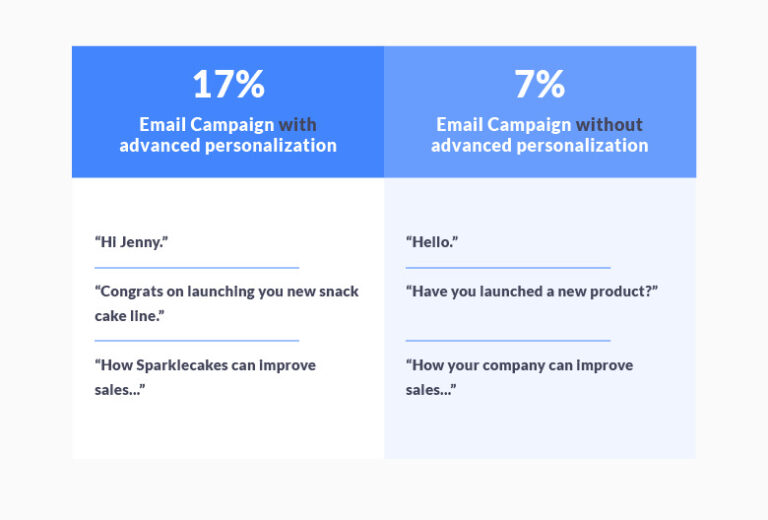
Image Source – propellercrm
So your prospects feel like you understand them and build trust with them over time. The research by Yes Lifecycle Marketing explains that personalized emails with subject lines get 50% more open rates. Use these customized subject lines if you’d like to improve the open rate for your cold emails.
Other than email personalization, here are some of the main reasons most cold email campaigns fail are,
-
Lack of Relevance
-
Lack of Value
-
Using a pre-written cold email template
-
Poor Timing
-
No Clear Call to Action
-
Failing to Follow Up
-
Not Being Mobile-Friendly
-
Using Unprofessional Tone
You need to use more specialized custom fields to have a highly personalized email that can improve outreach results. Now let’s explain why personalization in cold outreach is so important.
The Importance of Personalization in Cold Email Outreach
Why should you Personalize Cold Email? With personalization, the prospects are more likely to open the email, and they give a spontaneous response to you. Personalized emails can stand out quickly; they are more attractive than regular emails.
Elements you can personalize for emails are as follows,
-
Subject line
-
Intro
-
Email body
-
Call-To-Action (CTA)
-
A signature
For example, imagine a personalized email from a stranger, but the email directly communicates your pain points. Does that email get a higher response or open rate? Moreover, a personalized subject line can boost your open rates by 22% and improve your cold email outreach metrics.
The prospects will be positively impressed as you have taken the time to understand them. as you address their specific pain points by using their name and referencing their company or industry. Cold email personalization shows that you are not just sending emails in bulk but sincerely building connections.
Different Levels Of Personalization
Now you will be ready to send your personalized email, but before jumping right into it, it is better to calculate whether or not it is feasible. Sending different and curated customized emails to every prospect is practically impossible.
You may need to spend more effort on every prospect. Segmenting and categorizing prospects bring how much revenue to you. After that, you can move on with different levels of personalization to divide the prospects.
#1. Small deal size – Basic personalization
The small deal size includes listing the prospects who bring the lowest revenue. Most of the time, many prospects come under this category. This basic personalization can only operate by adding the first name of the company prospect works for and the industry.
#2. Medium deal size – Semi-personalized
The medium deal size segment has prospects connected with medium-sized deals. To increase the response rates of emails you send, You can increase the level of personalization for the email. Increase your research and go more profound; it will be better than just using the name in the emails.
#3. Large deal size – Hyper-personalized
The final segment is hyper-personalized, with significant deal-size prospects that bring the highest revenue to your business. These prospects need to pay the maximum attention, and they are often very few. Write cold emails after conducting in-depth research to reach out to these prospects. For instance, you must see all the challenges the prospect’s company faces.
Which level of personalization do you use in your cold email? Hyper-personalization or advanced personalization is the best option as they give more personal touch to each mail and are of the highest deal value. The main reason is that such emails are not template-based and appear with personalized text snippets.
Email Personalization Techniques with Examples
There are different personalization cold email techniques so you can find personalized cold email templates below.
#1. Personalization Using the Name of the Prospect
Using the prospect’s name is the fundamental way of personalizing by addressing your prospect with their name. It is a simple and effective strategy when sending out cold emails. How is personalization using the name of the prospect a powerful technique?
Now let’s see how this strategy works most of the time. A chemical reaction occurs in the brain, making the prospects more likely to notice your words. The engagement of the prospect is all that you need! For Example, Imagine you are the prospect with a cluttered inbox; one email has your name in the subject line; naturally, you may click on it.

Image Source – Salesblink
#2. Personalization Based on the Buyer’s Persona
Another way to personalize your prospects is by addressing your emails based on different buyer personas. To personalize using buyer personas, you may need to categorize or segment your prospects with similar pain points, similar goals, similar job profiles, company size, or industry.
After segmenting, create emails with personalized email content that will resonate with each category. This way of personalization requires effort from your side to understand the pain points of various buyer personas.
For example, all the sales department representatives in SaaS companies will have similar goals or have the same pain points about their products or services. By researching deeply at their customer service, you can easily find out what is wrong with their system. Crafting an email about any marketing-related tips or strategies you have experienced can help them reach their goals or solve the pain points that will catch their attention.
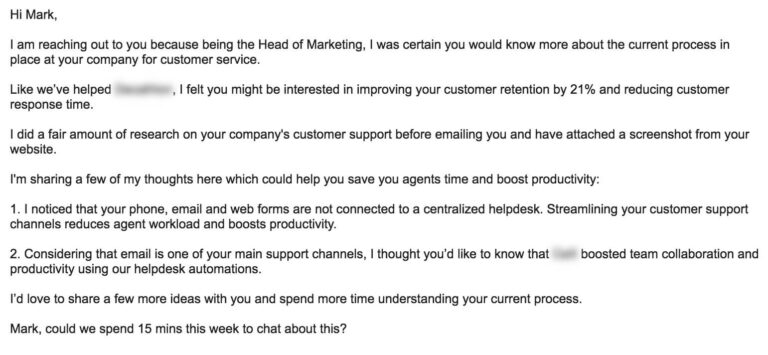
#3. Personalize On Trigger Events
Personalization using trigger events is an excellent opportunity. Whenever there is a trigger event in your organization, your email marketing team can contact prospects with a personalized cold email about that particular event—reaching out to your customers when they need a service, personalizing your cold email around the trigger event is vital.
Some examples of trigger events include a new product or service launch, the appointment of a C-Suite executive merger or acquisition, funding, industry events, company expansion, awards, and New Technology Installs.
When you personalize your email around a trigger event, you can reach out to prospects most willing to purchase your product or service.
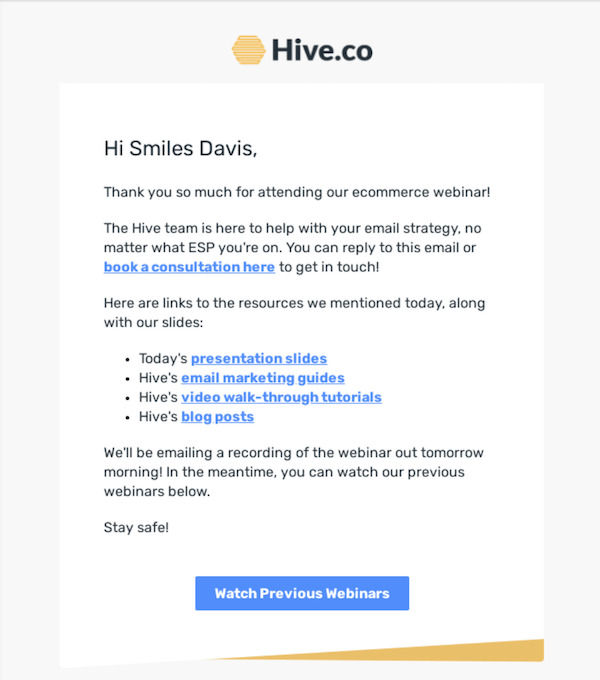
Image Source – Reallygoodemails
#4. Give Compliment to Prospects to Personalize
To build a long-term relationship with your prospects, give a compliment which is a great way that costs nothing. Also, according to the research, receiving a compliment will trigger the same reaction as money received in our brains. When your prospect reads your praise, you immediately get their attention, and they will be more interested in what you are about to say.
A few examples of using a complement for personalization are If your prospect wins an award and If your prospect has published a highly engaging article you liked. So compliments to projects also work without spending much money for growing business.
Always remember your compliments should be genuine and specific to the prospect or company you’re contacting. Keep it professional by Avoiding generic compliments that could apply to anyone.
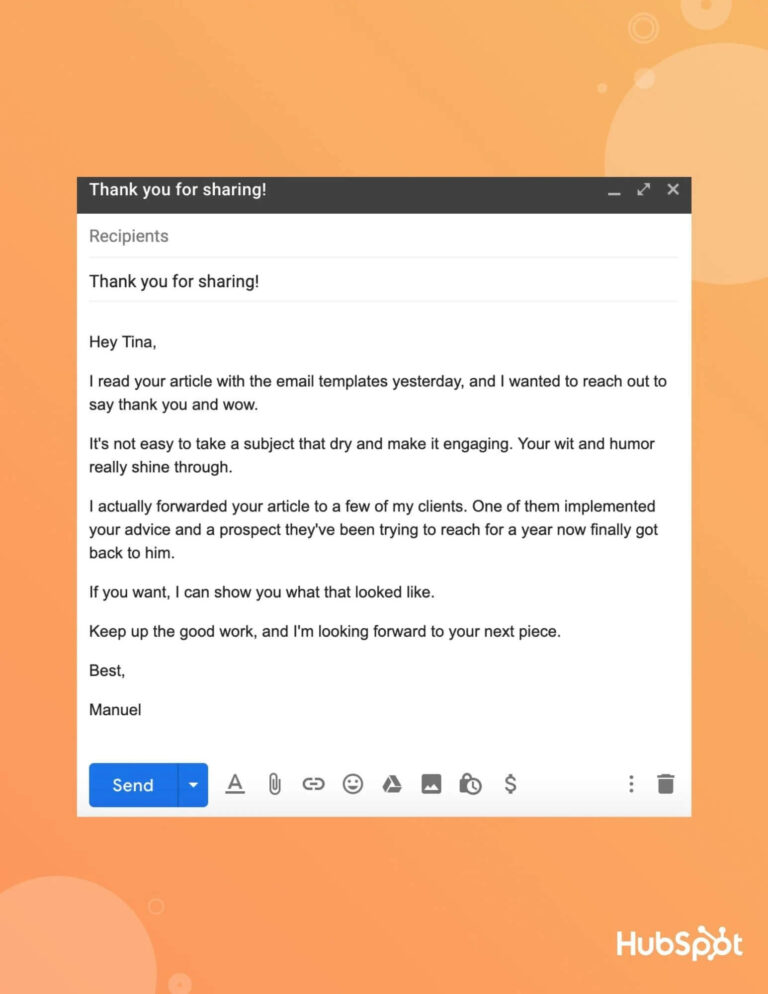
Image Source – Hubspot
#5. Using Prospects’ Interests to Personalize
This way of personalization makes prospects excited; you are sharing about things they are also interested in. You are more likely to get a response and engagement when you personalize your emails by mentioning the topics the prospect is interested in.
To find the prospect’s interest, use social media they used to hang on. So you may need to browse your prospect’s social media profiles and inform them about their interests after thorough research. The claim could be anything, a movie character, a sports team, or any destination, and look for the frequent mentions, comments, and posts and get information about what they like.
It is vital to balance being personal and creepy, as this technique is also slightly tricky. Try only to reference something the prospect has provided to you directly.
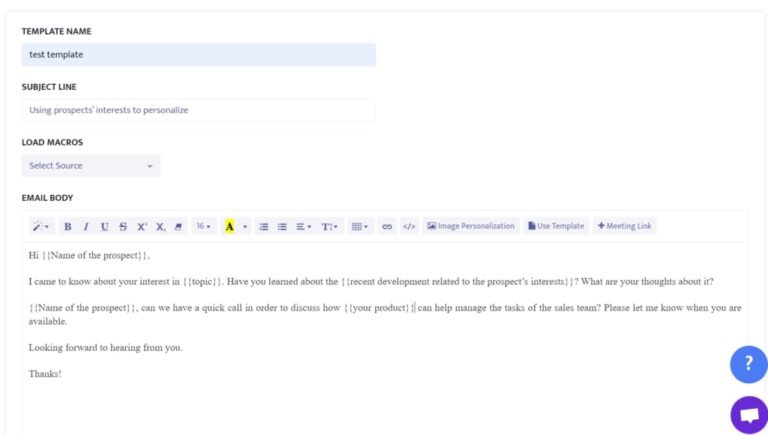
Image Source – Salesblink
#6. Personalization by Visual Representation
Using visuals such as graphical representations, images, and videos is another excellent way of attracting prospects. Here you have two main reasons videos and pictures are so effective,
-
It is easy to communicate facts.
-
It offers a human touch.
The traditional way of writing emails only with text needs to be more responsive. Including visuals is highly responsive; you must use videos and images to add the human touch to every mail.
Visuals create better connections when prospects get to see a video of a human explaining the features of a product or service.
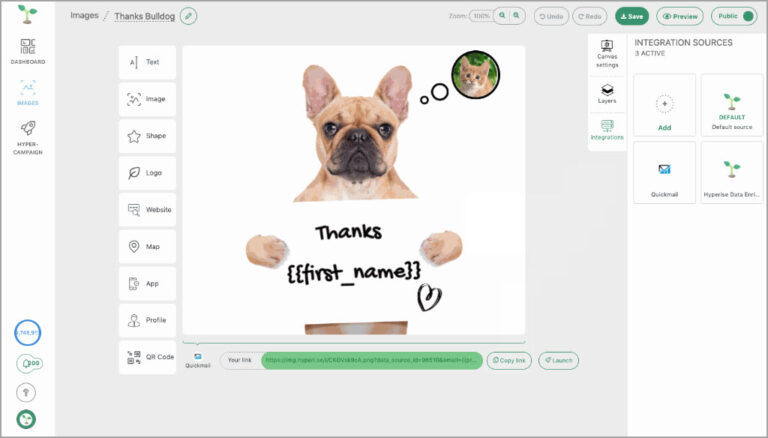
Image Source – Quickmail
#7. New Technology Personalization
Find out about the software prospects currently use; you can find it easily from the prospect’s website. Then you will get an idea of what your clients currently use and their requirements. Also, you get to know whether the tools they use are similar to the solution you are offering, which can bring chances that you will get an opportunity to present your product in front of them.
Based on the company’s existing technology stacks will give your product a different angle to personalize the emails. Your prospect might be using your product. By mentioning this, you will bring them a sense of familiarity with your product.
For Example,
Subject: Productive workflow with {{Product name}}
Hey there, {{First Name}}
I came across your company and noticed that you currently use [new technology] for [specific use case].
I understand the challenges of implementing and optimizing these tools, as I’ve previously worked with similar technologies.
So, I am introducing you to our {{product/service}}, which seamlessly integrates with [technology] to boost your work productivity capabilities and provide additional value.
Our {{Product name}} is designed to [briefly describe how your product/service can benefit their specific use case].
#8. By Mentioning Mutual Connection
Mentioning a mutual connection is another excellent way of personalizing your emails, earning your prospect’s trust, and connecting with them. With this technique, stranger feelings will go away, a fantastic way of gaining confidence and ultimately making an instant connection with your prospects.
Thus cold email isn’t cold anymore. Moreover, psychologically, we trust people who are pretty similar to us. Since your prospect can find the email relatable, they are more likely to engage and respond.
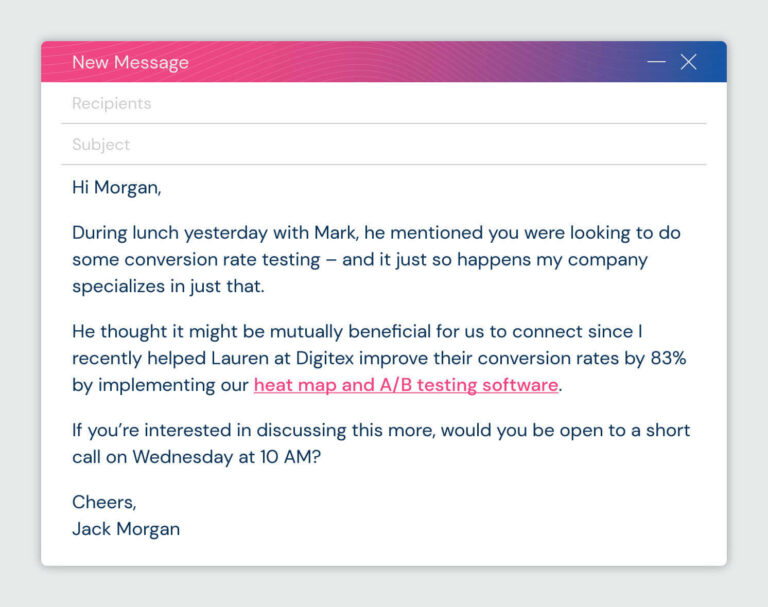
Image Source – Mailshake
How to Find Your Email Personalization Opportunities
To find your email personalization opportunities, you can check out some ways to personalize prospects; some ways are as follows,
Crunchbase
If you are serious about cold email personalization, you can use Crunchbase. Crunchbase helps you send personalized emails with pre-built templates tailored to your prospects while providing live Crunchbase data. They offer information on funding rounds, company news, acquisitions, and other significant updates. By leveraging Crunchbase, you can also get to know the prospects and enhance your outreach with a personalized approach.
Sales Navigator feed
LinkedIn Sales Navigator is another tool for crafting personalized emails for prospects. The Sales Navigator feed will show you updates by adding people to your lists, which it has attained from web sources worldwide. Being a sales professional, you can easily collect the details about your prospects quickly. You should use the keywords in the LinkedIn sales navigator search for this.
Social Media
Use social media research, LinkedIn profile, find company updates on their website, look at their Twitter and official company social media page, or ask your prospect directly. It’s impossible to send a follow-up email to every social media platform with an email request. And you may not need it on a regular base; It’s tactic when you genuinely want to build an authentic relationship with an individual along with a new email campaign.
Final Thoughts
By personalizing your cold emails, your emails will land in the prospects’ inboxes without getting marked as spam. If the level of personalization is high in your email outreach, the better the chance people will respond positively and buy from your business. That is why you must write personalized cold emails to help you stand out, along with cold outreach automation tools. In short, email personalization can make your prospects feel valued and connected; thus, they are more likely to purchase from you.
